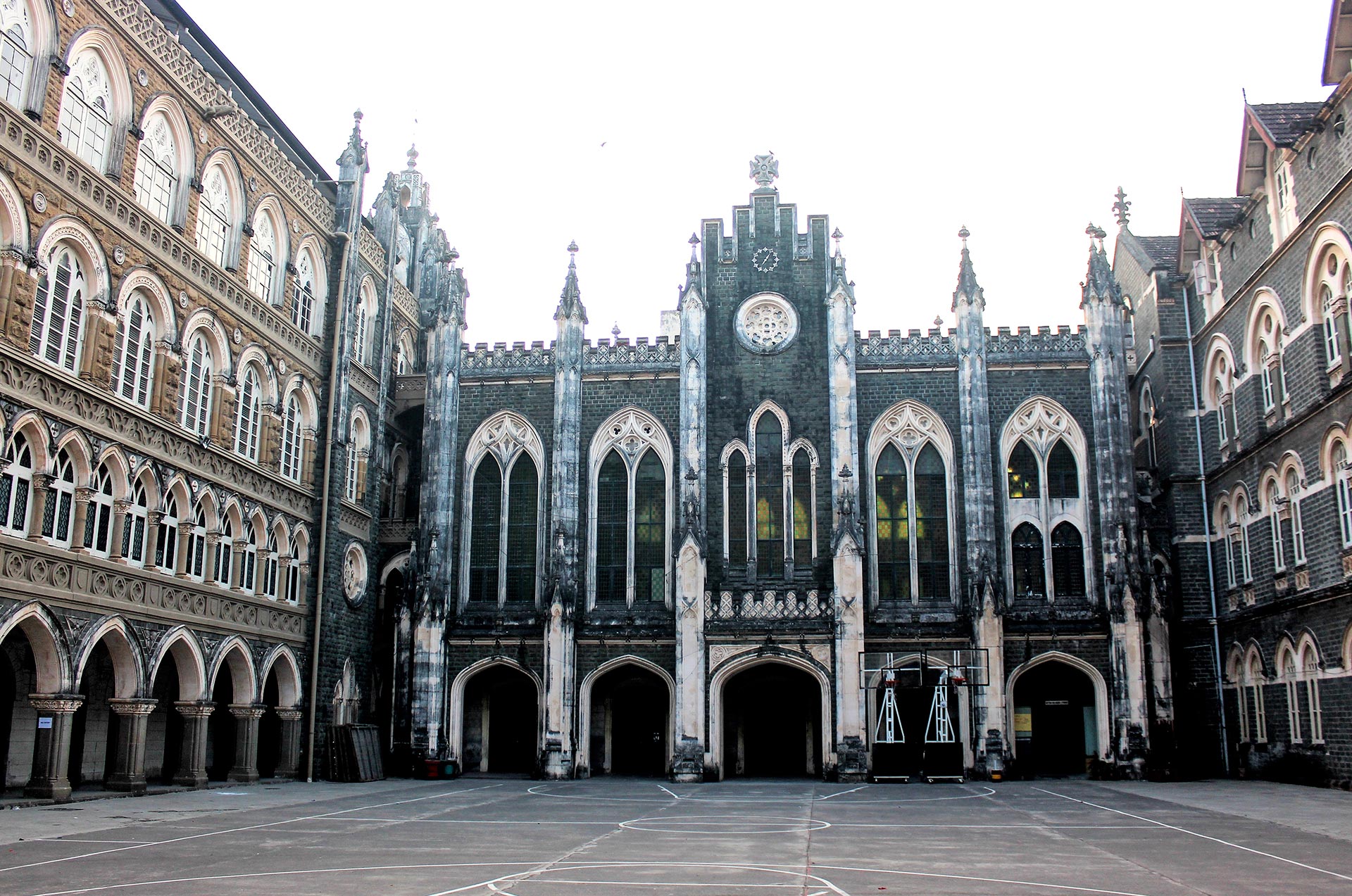
Saint Xaviers College, Mumbai, India
Year designation
Lithology
Aesthetics
Geological settings
Mesozoic / Cenozoic – Late Cretaceous-Palaeogene, Large-scale basaltic volcanism
Location
Western margin of Peninsular India; over an area of more than 500,000 km2
Saint Xaviers College, Mumbai, India
Sculpting India's cultural diversity in stone
The basalt and associated trachyte from the Deccan Traps bear testimony to India’s cultural and architectonic heritage, and have been used from antiquity to present times. Their abundance, ease of workability, and durability have made them the most preferred building material that has documented the cultural heritage and ethos of its inhabitants. The use of Deccan basalt in architectonic heritages from west-central India is numerous and exhaustive. Four of the UNESCO World Heritage Sites based in India viz. Ajanta, Ellora, the Elephanta cave temples and Chhatrapati Shivaji Maharaj Terminus, formerly Victoria Terminus are made out of these two rock types. The world-famous Ajanta is the second-century BC in-situ cut basalt Buddhist cave monument with paintings, beautiful sculptures and panels. The Ellora cave temples near Aurangabad depict various divinities of Hinduism, Buddhism, and Jainism religion that were cut out in the basalt during 600–1000 AD. The temple complex is adorned with beautifully crafted sculptures and rock carvings. The Kailasa Temple of Ellora is the largest monolithic rock-cut temple in the world. Prayer halls with central stupas and large pillars are immaculately carved in basalt. The Elephanta caves are also carved in basalt on the isolated Gharapuri Island in the Arabian Sea, off the Mumbai coast and host the famed Trimurti Mahesh (Shiva). Rock-cut caves of lesser grandeur at Bhaja, Karla, Bedse near Pune and Mahad in Konkan contain beautifully carved stupas, pillars and chambers in compound pahoehoe lavas. In all, about 1200 rock-cut caves along ancient trade routes occur in pahoehoe lavas in the Deccan Traps. Basalt was also extensively used in Heritage Buildings in Mumbai, Pune, Kolhapur, Ahmednagar, Aurangabad and many other cities. Several world-class buildings, conforming to the Gothic, Baroque and Saracenic architecture were constructed in stone in keeping with contemporary European architectural trends. Some of the prominent edifices of old Bombay constructed from basalt include the Ballard Pier in the Bombay Docks, the High Court, Saint Xavier’s College, Wilson College, Cathedral School, Old Customs House, the Prince of Wales Museum, The General Post Office, Taj Mahal Hotel, The Times of India Building, The Crawford Market Building, etc. In Pune, the icon of the city ‘Shaniwar Wada’ – home of the Peshwas, is made of basalt.
- Author(s)
Raymond A. Duraiswami, Gurmeet Kaur
raymond.duraiswami@gmail.com


